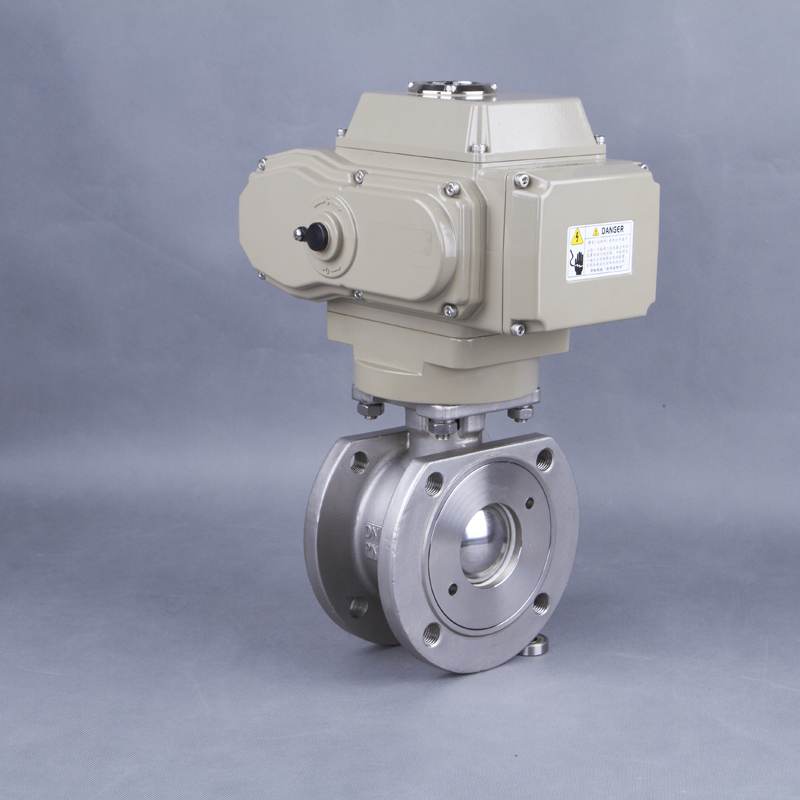Ball valves play a crucial role in fluid control systems, offering a simple yet effective way to manage flow. This blog explores how ball valves function, focusing on their mechanism and key components. It dives into the distinction between manual valves and advanced options like the actuated ball valve, which automates operations for greater precision and efficiency. Learn how ball valve actuators, including electric actuators, enable seamless control in industrial applications. The benefits of a ball valve with an actuator are emphasized, particularly in industries that rely on automated ball valves for scalability and reliability. The post also provides insights into their maintenance and applications in sectors like oil and gas, water treatment, and more. Whether choosing a manual or automated solution, this guide helps optimize your fluid control system.
Introduction
Ball valves are a fundamental component in fluid control systems, known for their simplicity, efficiency, and dependability. Widely used across various industries, from oil and gas to water treatment and chemical processing, these versatile valves offer precise control over fluid flow. But how exactly does a ball valve open and close? Understanding their operation is key to appreciating their value in industrial applications. This guide explores the inner workings of ball valves, examining their mechanism, the differences between manual and actuated models, and their critical applications. Whether you’re selecting a manual valve or looking into automated solutions, this blog will help you make an informed choice for your system’s needs.
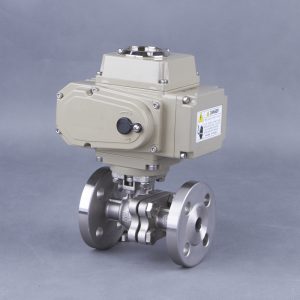
Section 1: Understanding the Ball Valve Mechanism
Explain the basic components of a ball valve (body, ball, stem, seats, and handle/actuator).
A ball valve consists of five main components, each playing a critical role in its function. The body forms the main structure, housing all the internal parts and providing the valve with its durability and pressure resistance. Inside the body is the ball, featuring a central bore; this is the key element that regulates fluid flow. When the bore aligns with the pipeline, fluid passes through, and when rotated 90 degrees, it blocks the flow. The stem connects the ball to the handle or actuator and is responsible for transmitting the torque required to rotate the ball. The seats, typically made from durable materials like Teflon, provide a tight seal around the ball, preventing leaks and ensuring smooth operation. Finally, the handle (in manual valves) or actuator (in automated valves) provides the mechanism for operating the valve.
While the handle allows for manual rotation, an actuator automates this process, offering precise and efficient control in demanding applications. Together, these components ensure the ball valve delivers reliable and effective performance across various industrial systems.
Describe the working principle of a ball valve, focusing on the rotation of the ball and its impact on flow regulation.
The working principle of a ball valve lies in the rotation of a spherical element, or ball, within its body to regulate the flow of fluid. This ball features a central bore or hole that aligns with the pipeline to permit flow when the valve is in the open position. A 90-degree rotation of the ball closes the valve by positioning the solid part of the ball against the flow path, effectively blocking it. The rotation is achieved through the valve’s stem, which connects the ball to either a manual handle or an actuator for automated operation. This design ensures efficient flow control by providing a swift and reliable shut-off mechanism while minimizing pressure drop when the valve is fully open. The simplicity of the ball valve’s structure, combined with its dependability in sealing, makes it an ideal choice for a wide range of industrial and mechanical systems.
Section 2: Manual vs. Actuated Ball Valves
Compare and contrast manual ball valves with actuated ball valves.
Manual ball valves and actuated ball valves serve the same fundamental purpose of regulating fluid flow but differ significantly in operation and application. Manual ball valves rely on a handle that requires human intervention to rotate the ball and control the flow. They are simple to use, cost-effective, and ideal for applications where flow adjustments are infrequent or do not require precise timing. On the other hand, actuated ball valves utilize a mechanical actuator, such as an electric, pneumatic, or hydraulic device, to automate the rotation of the ball. This automation enables precise and reliable operation, making them a preferred choice in environments where remote or continuous control is essential. Actuated ball valves are more efficient for complex systems, providing faster response times and reducing the risk of human error.
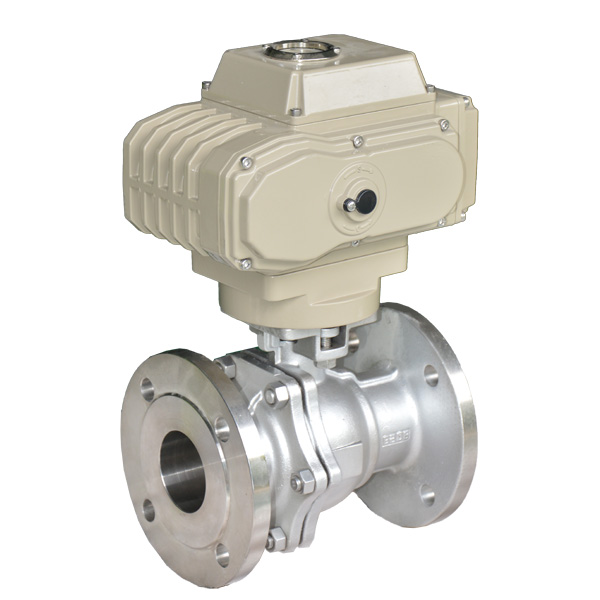
However, they are generally more expensive than their manual counterparts and require additional maintenance due to their increased complexity. While manual ball valves excel in simplicity and affordability, actuated ball valves offer unparalleled convenience and performance in demanding industrial settings.
Define what an actuated ball valve is and outline its advantages in automated systems.
An actuated ball valve is a type of ball valve integrated with a mechanical actuator that automates the rotation of the internal ball to control fluid flow. These actuators can be powered by electric, pneumatic, or hydraulic systems, allowing for precise and efficient operation with minimal manual intervention. By automating the opening and closing process, actuated ball valves enhance control accuracy and are particularly well-suited for remote or complex applications where manual operation is impractical or inefficient. They offer significant advantages in automated systems, including faster response times, improved consistency in operation, reduced human error, and the ability to integrate with broader process control systems. This makes them invaluable in industrial settings that demand high performance and reliability, such as chemical processing, oil and gas, and water treatment facilities.
Include relevant phrases like “ball valve actuators” and “actuated ball valve” naturally.
Ball valve actuators play a pivotal role in modern fluid control systems, transforming the traditional ball valve into an automated solution capable of precise and efficient operation. An actuated ball valve, powered by mechanisms such as electric, pneumatic, or hydraulic actuators, automates the rotation of the internal ball to regulate or halt fluid flow. This automation is especially advantageous in systems requiring remote control, continuous monitoring, or rapid response to changing conditions. By integrating ball valve actuators, industries can achieve enhanced accuracy, reduced downtime, and seamless integration with industrial process systems. These features make actuated ball valves ideal for demanding applications in sectors like chemical processing, water management, and oil and gas, where reliability and efficiency are paramount.
Section 3: Role of Ball Valve Actuators
Explain how actuators (electric, pneumatic, or hydraulic) control the ball valve’s operation.
Actuators, whether electric, pneumatic, or hydraulic, control the operation of a ball valve by automating the rotation of its internal ball, which determines the flow of fluid through the valve. Electric actuators use an electric motor to drive the rotation, offering precise control and ease of integration with modern automated systems. Pneumatic actuators rely on compressed air to generate motion, ensuring rapid response times and suitability for environments where electricity use may be limited. Hydraulic actuators, on the other hand, utilize pressurized fluid to produce stronger force, making them ideal for heavy-duty applications requiring robust performance. Each actuator type connects to the valve’s stem, enabling controlled and consistent movement of the ball within the valve body. This precision ensures efficient fluid regulation while minimizing manual intervention, making actuated ball valves indispensable for industries demanding accuracy, reliability, and efficiency.
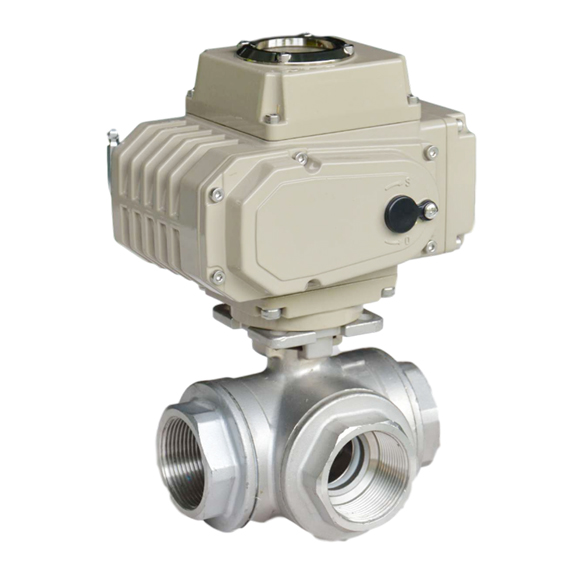
Highlight the use of “ball valve with an electric actuator” in industrial applications requiring precise automation.
A ball valve with an electric actuator is a critical component in industrial applications that demand precise automation and control. By utilizing an electric motor to rotate the ball within the valve body, this configuration ensures highly accurate flow regulation, making it ideal for processes requiring tight tolerances and consistent performance. The seamless integration of electric actuators with advanced control systems allows for real-time monitoring, remote operation, and programmable adjustments, significantly enhancing operational efficiency. This makes it a preferred choice in industries such as pharmaceutical manufacturing, water treatment, and food processing, where precision and reliability are paramount. Additionally, the clean and efficient operation of electric actuators, coupled with their ability to operate even in hazardous or restricted environments, further underscores their value in diverse industrial settings.
Discuss how “automated ball valves” enhance scalability and operational efficiency.
Automated ball valves significantly enhance scalability and operational efficiency in industrial systems by streamlining processes and reducing manual intervention. These valves, equipped with actuators for automated control, seamlessly integrate with advanced process control systems, enabling precise fluid management across multiple points. This automation allows facilities to scale operations without proportional increases in labor or oversight, as the valves can be remotely operated and monitored in real time. Industries such as oil and gas, chemical processing, and power generation particularly benefit from this capability, where extensive networks of valves must operate in coordination. Additionally, automated ball valves contribute to minimizing downtime through rapid response to system changes and diagnostics, ensuring consistent performance and cost-effective operation. Their reliability and adaptability make them indispensable for scaling complex industrial operations while maintaining optimal efficiency.
Section 4: Applications of Ball Valves with Actuators
Explore common industrial settings where ball valves with actuators are used (e.g., oil and gas, water treatment, chemical processing).
Ball valves with actuators are integral to numerous industrial settings due to their reliability, precision, and automated functionality. In the oil and gas industry, these valves are employed for precise flow control and isolation in pipelines, ensuring safe and efficient handling of high-pressure fluids and gases. Their robust design and automation capabilities make them ideal for remote and hazardous locations. In water treatment facilities, actuated ball valves regulate the flow of water and chemicals during processes like filtration, disinfection, and distribution, minimizing manual intervention while maintaining accuracy. Meanwhile, in chemical processing, these valves manage the flow of corrosive or high-temperature substances with exceptional precision, essential for maintaining safety and process integrity. Their ability to integrate seamlessly with control systems and adapt to demanding environments makes them a trusted solution across these industrial applications.
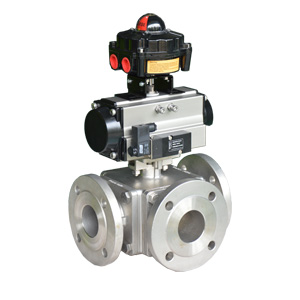
Showcase the flexibility and reliability of “ball valves with actuators” in diverse environments.
Ball valves with actuators demonstrate exceptional flexibility and reliability, making them a preferred choice across diverse industrial environments. Their ability to handle high-pressure systems, endure extreme temperature ranges, and resist the effects of corrosive substances underscores their robust design and engineering. These valves can adapt to challenging conditions, whether in offshore oil rigs subject to harsh marine climates, chemical plants managing volatile or abrasive fluids, or power generation facilities demanding precise control under high operational stresses. The seamless integration of actuators allows these valves to function with consistent accuracy and minimal manual intervention, even in remote or hazardous locations. This combination of adaptability and durability ensures dependable performance, making them an indispensable component for industries that prioritize efficiency, safety, and long-term reliability.
Incorporate the keyword “automated ball valve” while describing its automation benefits.
An automated ball valve is a critical innovation in industrial systems, offering unparalleled automation benefits that improve efficiency, reduce manual labor, and enhance operational precision. By integrating advanced actuators, this valve type automates the control of fluid flow, minimizing human intervention and enabling real-time adjustments through centralized systems. This is particularly impactful in industries like chemical processing, where precise dosing of corrosive substances is crucial, or in water treatment plants, where flow rates must be optimized across large-scale operations. The automation provided by an automated ball valve not only accelerates processes but also reduces error margins, ensuring consistent performance. Furthermore, the ability to operate these valves remotely, even in hazardous environments, adds an extra layer of safety and reliability, making them an indispensable solution for modern industrial challenges.
Section 5: Maintenance and Troubleshooting
Provide tips for maintaining both manual and actuated ball valves to ensure performance and longevity.
To ensure optimal performance and longevity of both manual and actuated ball valves, proper maintenance practices are essential. Begin with regular inspections to check for visible signs of wear, leakage, or damage to the valve body, seals, and actuator components. Cleaning the valve periodically to remove debris or buildup that may impair functionality is also critical, especially in systems handling corrosive or high-particulate fluids. Lubrication of moving components, following the manufacturer’s recommendations, helps reduce friction and prevent premature wear. For actuated ball valves, ensure the actuator is in good working condition by verifying connections, testing electrical or pneumatic systems, and calibrating the actuator as needed. Address components showing wear or degradation promptly to avoid compromising system integrity.
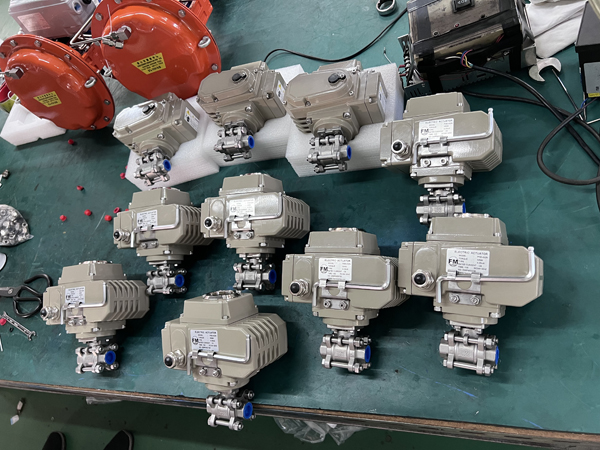
Lastly, adhere to the maintenance schedules outlined in the manufacturer’s guidelines, which are tailored for specific operating conditions and valve designs. This proactive approach minimizes downtime, enhances efficiency, and extends the service life of both manual and actuated ball valves.
Outline common issues (like leakage or actuator malfunction) and solutions.
Ball valves, while highly efficient, can occasionally encounter issues such as leakage, actuator malfunction, or wear and tear on seals. Leakage often results from damaged or degraded seals, improper installation, or debris lodged within the valve. To address this, inspect the seals for wear and replace them promptly, ensuring correct alignment and cleaning any obstructive materials. Actuator malfunctions may stem from electrical or pneumatic failures, misalignments, or insufficient calibration. Diagnosing these issues requires a thorough check of power connections, system pressure levels, and actuator settings, followed by recalibration or component replacement as necessary. Regular maintenance is key to preventing these problems; this includes routine cleanings, timely lubrication, and adherence to the manufacturer’s operational guidelines. For both leakage and actuator concerns, investing in high-quality replacement parts and conducting scheduled inspections can significantly reduce downtime and extend the valve’s operational life, ensuring reliable performance across industrial applications.
FAQS
Q1: How does a ball valve open and close?
A ball valve operates through the rotation of a ball with a hollow center, often moved by either a manual handle or an actuator. When the hollow center aligns with the flow path, the valve is open, allowing fluid to pass through. Rotating the ball 90 degrees blocks the flow path, closing the valve. This design ensures precise control and a tight seal.
Q2: What is the typical warranty period for ball valves?
Warranty periods vary by manufacturer but typically range from 12 to 24 months from the date of installation or delivery. Ensure you review the manufacturer’s warranty terms for details on coverage and conditions.
Q3: What price terms are offered for ball valves?
Common price terms include EXW (Ex-Works), FOB (Free on Board), CIF (Cost, Insurance, and Freight), and DDP (Delivered Duty Paid). The specific terms depend on the agreement between the buyer and seller, considering factors such as the delivery destination and additional services.
Q4: How long is the delivery time for ball valves?
Delivery times depend on the valve specifications, production schedules, and order volume. Standard valves are often delivered within 1-4 weeks, while customized solutions might require 6-8 weeks or more. Confirm delivery timelines when placing an order to align with project requirements.
Q5: What are the typical shipment terms for ball valves?
Shipment terms commonly include options such as air freight, sea freight, or express courier services, depending on the urgency and distance. Packaging is designed to protect the valves during transit, complying with industry standards to ensure the product arrives safely.
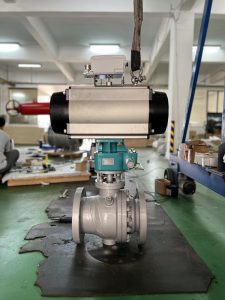
Conclusion
Understanding how a ball valve opens and closes provides valuable insight into its importance in fluid control systems. Whether using a manual valve or advanced solutions like an actuated ball valve or automated ball valve, the mechanism remains centered around the precise alignment of the internal ball to regulate flow. The inclusion of a ball valve with actuator, particularly one equipped with an electric actuator, enhances control, accuracy, and operational efficiency in demanding industrial settings. With ball valve actuators, industries can achieve automated, reliable performance that supports scalability and precision. By selecting the right type of valve for your application, whether manual or automated, you can optimize fluid control while ensuring durability and reliability across a wide range of systems.

